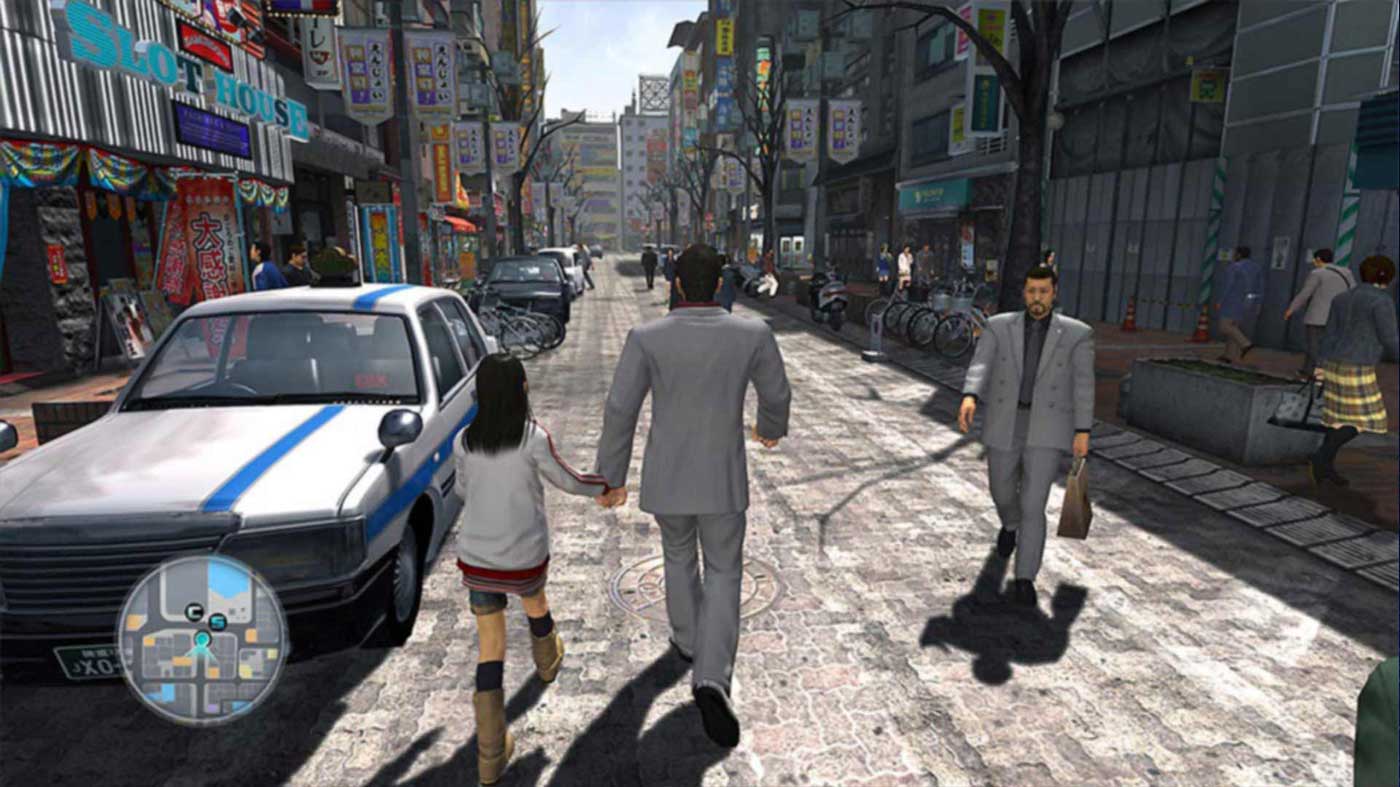The modern trend of remastering games has become a great way for audiences to be reintroduced to games they may have missed in previous generations. With the first two games in the Yakuza series being released on the PS2, the games were subject to total remakes in the form of Yakuza Kiwami and its sequel. But the next three titles instead received a full rework of the script and a graphical upscale from the PS3 to bring us the Yakuza Remastered Collection. Overhauled to include cut content that was apparently too Japanese-centric for audiences in the West, as well as a revamp of the localisation and translations, the Yakuza Remastered Collection ensures that the story of the “Dragon of Dojima” Kazuma Kiryu can be experienced in its entirety on the PS4.
Of course, if you’ve been a fan of the Yakuza series or had the opportunity to play even one of the instalments, you’ll know that the games are an eclectic mix of life simulator and street brawler, with a heavy dose of cinematic storytelling thrown in for good measure. There’s a lot of brand loyalty within the games – Sega throws self-promotion around in fun minigames, and you’ll never see the characters not drinking a Suntory-branded drink. But if you’re like me and you’ve never actually sat down to appreciate a Yakuza game before, hold on tight and come along for the ride, because it’s well worth the experience.
YAKUZA 3
As the former Fourth Chairman of the Tojo Clan, we open with the protagonist Kazuma Kiryu settling into his new life running the Morning Glory Orphanage in Okinawa. Far from the seedy underworld of the entertainment district of Kamurocho in Tokyo, Kiryu is slowly dragged back into the world of Yakuza politics after the land the Orphanage is situated on is threatened by a local Yakuza family. Going further down the rabbit hole uncovers that the Tojo Clan had interests in the land, but this is stopped by the Dojima family patriarch and current chairman Daigo Dojima. Kiryu returns to Kamurocho when he discovers that Daigo has been shot, to uncover what is happening and save the orphanage.

Despite the amount of effort and polish that has gone into Yakuza 3 to remaster it for a modern console, it quickly becomes apparent that this is an upscaled PS3 title. Don’t get me wrong, the game is absolutely entertaining – the fighting mechanics are easy to learn and have significant depth, the narrative is top-shelf and will have you enthralled from the start, and the abundance of mini-games to play and side quests to fulfil means that you’ll never not have something to do. But when it gets down to the nitty gritty of the game – character models and appearances are dated (including “glued-on” clothes for characters), loading screens that seem a tad too long compared to modern games, and clunky movements in battle are just a few minor discrepancies.
YAKUZA 4
Stepping away from the linear storytelling model in Yakuza 3, Yakuza 4 weaves itself around four central characters, each with a narrative thread that works its way through the game before culminating together at the end. Along with series icon Kazuma Kiryu, the district of Kamurocho is played out through three new playable characters; loan shark Shun Akiyama, death row inmate Taiga Saejima, and dirty cop Masayoshi Tanimura. Each character not only has their own backstory and set of side missions, but a distinct fighting and gameplay style. Of course alongside ‘Uncle Kaz’, the story yet again deals with the Tojo Clan’s grip on Kamurocho and the politics and infighting amongst the Yakuza families within it.

Improving on what made its predecessor a good game, Yakuza 4 instantly feels like a much better experience. It is obvious from the get-go that while the game is built off Yakuza 3, a ton of refinement has gone into it to really improve on the previous game. The four playable characters each have their own upgradeable combat style and play significantly different to one another, loading times are reduced between scenes, and even graphically the game fares a bit better (but still with that PS3-esque sheen over the top). The combat is still a little bit clunky but much smoother that before, and characters’ clothes are still glued to them in that classic character model style.
YAKUZA 5
Years after the events of Yakuza 4, the amicable truce between the Tojo Clan and the Omi Alliance is on the verge of collapse, leading to a potential war. Leading a simple life as a taxi driver in Fukuoka, Kazuma Kiryu cannot seem to escape the perils of the Tojo Clan as Daigo Dojima goes missing, leaving Kiryu to once again get involved in affairs. Yakuza 5 goes well beyond the boundaries of its previous instalments; introducing new locales not seen before in the series, as well as expanding the playable character roster to five – recurring character Haruka Sawamura becomes playable, as well as newcomer Tatsuo Shinada. It is difficult not to go into too much depth about the story, as with the games play so cinematically that every detail feels like a worthy inclusion.

If you’re anything like me and play the three titles in order, Yakuza 5 is definitely a treat once 3 and 4 have been played. It is the most refined experience of the three – the minigames are fresh and exciting (including taxi driving missions and street racing), the combat feels less weighted and clunky, and loading screens and times have dropped significantly. Given the game is still a noticeable PS3 remaster, the game still looks pretty good – you can tell by this point in development of the series that the developers had learned to push the console’s capability as much as possible.
As this trilogy was my first time experiencing the Yakuza franchise, I can honestly say I was thoroughly impressed. Any lack of polish that the games have I simply would put down to the fact that, while remastered, these games are effectively ten, nine and five years old respectively (for Western audiences at least). I suppose that then begs the question – would these games have benefitted more from a full remake in the ‘Kiwami’ style such as Yakuza 1 and 2 received? Would it have been worth the effort to completely rebuild these games more a much more modern playing experience, and to give the developers a chance at rectifying things? Fans of the series may find themselves wanting to skip these remasters unless absolutely necessary, as even though there has been a full rework of the script and inclusion of cut content, they are effectively the same games you’ve played before, just with a touch of make-up.




